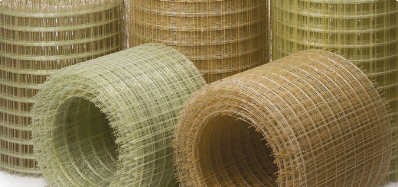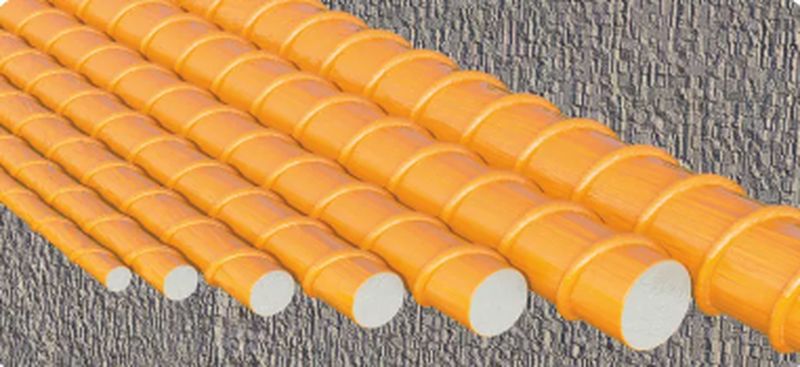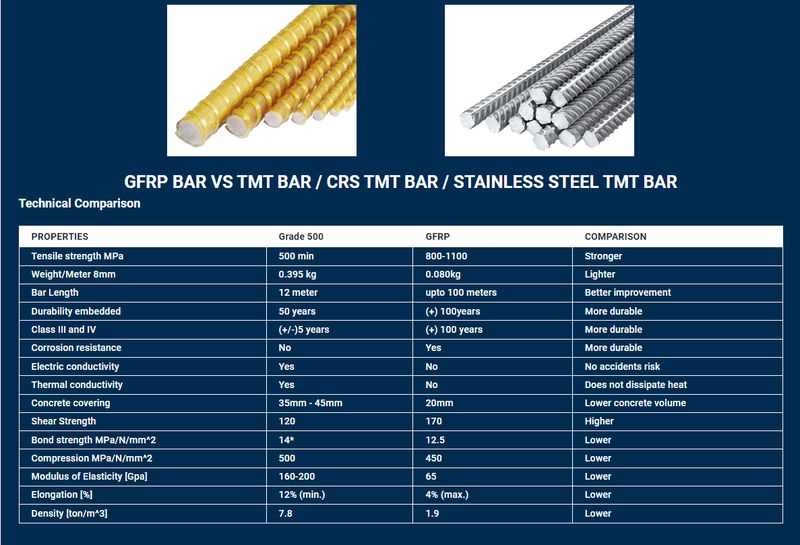Shri Rathi Group

GFRP
GFRP, a revolution beyond steel highlights the emergence of Glass Fiber Reinforced Polymer (GFRP) as a potentially transformative material in various industries.
promising advancements that go beyond the conventional uses of steel. With potential benefits, innovations, and paradigm shifts that GFRP could bring to the forefront.
First developed in the early 20th century, Glass Fiber Reinforced Plastic (GFRP) has become a staple in the building industry.
Originally used merely for the construction of parts, the architectural advantages were discovered with the attempted destruction of Disneyland’s “House of the Future ” Built in the mid 1950s.
The futuristic house was built entirely of fiberglass, and when the attraction was no longer deemed necessary, it was scheduled to be destroyed in 1967.
Astonishingly, the wrecking ball merely bounced off the structure, and the possibilities for GFRP were finally recognized and began to grow.
What is GRP?
GRP stands for Glass Reinforced Plastics. It is also known as glass fiber, composite plastic, or FRP. The polymer is usually the epoxy, polyester, or the vinyl.
It is strong, extremely light, and versatile. the behavior of GRP is different from that of traditional thermoplastics used in everyday products.
This means that it has properties that can be used in a range of applications in many industries.
Fibreglass materials are commonly used in high performance leisure aircrafts and gliders, boats, automobiles, bathtubs, hot tubs, water tanks, roofing products, pipes, cladding, cast, Surfboards, and external door skins.
What is FRP?
FRP stands for Fiber Reinforced Polymer. FRP is a composite material formed from a polymer matrix reinforced with fibers.
While the fibers used are usually glass fibers, such as GRP, other fibers such as carbon, aramid, or basalt are also used.
Fibre reinforced polymers are made of two primary constituents; fibres and a polymer matrix. In FRP, the fibre is embedded in a polymer matrix.
This structure gives completely different chemical and physical properties than the properties of the individual materials. In fact, these materials satisfy higher engineering requirements than the ordinary materials.
Hence composites are applied in less sophisticated to very sophisticate and demanding manufacturing tasks.
Mechanical, civil, biomedical, marine, and the aerospace industries are main users of composite materials.
The primary role of fibres is to provide strength and stiffness to the material. But the fibre alone is brittle (ex: glass).
Therefore, the fibres are encased in a coating of polymer materials.
Polymer matrix holds the fibres in their position and transfers the loads between the fibres. It also contributes to the inter-laminar shear strength.
The fibres used in composite are as follows; E-glass, S-glass, Quartz, Aramid (Kevlar 49), Spectra 1000, Carbon (AS4), Carbon (IM-7), Graphite (P-100), and Boron. Polyesters, Vinyl Esters, Epoxies, Bismaleimides, Polyimides, and Phenolics are the polymers used.
Each polymer has different chemical and physical properties; therefore, contribute differently to the composite structure. As a result, the composite properties are also different based on the polymer.
Polyester and vinyl are low cost materials, hence used extensively in commercial applications. Epoxies are used for high performance continuous fibre matrices.
It also performs better than vinyl and polyester in high temperature conditions. Bismaleimides and Polyimides are high temperature resin matrices for use in temperature critical engineering applications.
Phenolics are high temperature resin systems with a good smoke and fire resistance; therefore, used in aircraft interiors.
Now Introducing GFRP building solutions


GFRP, or Glass Fiber Reinforced Polymer, is a composite material that has gained significant attention in the construction industry.
It is made by reinforcing plastic resin with fine glass fibers, resulting in a lightweight yet durable material. GFRP offers several advantages over traditional construction materials, such as steel, like high strength, corrosion resistance, and design flexibility.
It has found application in various structural elements, such as reinforcing bars, grids, panels, and profiles.
With its exceptional properties, GFRP is revolutionizing the way we build, providing sustainable and innovative solutions for a wide range of construction projects.
GFRP bars, mesh, and beam elements are key components in the construction industry, revolutionizing the way structures are built.
GFRP, or Glass Fiber Reinforced Polymer, is a composite material that combines the strength of glass fibers with the versatility of polymer resins.



Shri Rathi Collaborates with Armastek
The Rathi Group embraces Collaborating with Armastek, a renowned Russian composite reinforcement manufacturer, Shri Rathi Group aims to revolutionize construction with sustainable solutions.
Armastek’s innovative fiberglass products outperform steel in strength while creating lighter, efficient structures.
The partnership promotes sustainable building, reducing carbon footprint and enhancing structure durability.
Together, Shri Rathi Group and Armastek usher in an era of stronger, efficient, and sustainable construction practices.
Armastek’s decade-long success in vital facility construction aligns with Shri Rathi’s expertise, promising a sustainable future.
Their collaboration capitalizes on GFRP technology, redefining construction practices and demonstrating commitment to excellence and the environment.
The company is exclusively represented in Israel through the company Peledaviron ltd
